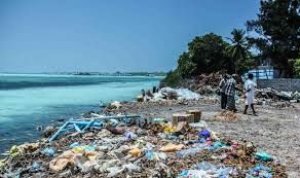
Svi iLive sadržaji medicinski se pregledavaju ili provjeravaju kako bi se osigurala što je moguće točnija činjenica.
Imamo stroge smjernice za pronalaženje izvora i samo povezujemo s uglednim medijskim stranicama, akademskim istraživačkim institucijama i, kad god je to moguće, medicinski pregledanim studijama. Imajte na umu da su brojevi u zagradama ([1], [2], itd.) Poveznice koje se mogu kliknuti na ove studije.
Ako smatrate da je bilo koji od naših sadržaja netočan, zastario ili na neki drugi način upitan, odaberite ga i pritisnite Ctrl + Enter.
Količina plastičnog otpada u svjetskim oceanima je manja nego što se prije mislilo
Posljednji pregledao: 02.07.2025

It is believed that there is quite a large amount of plastic waste in the ocean. At one of the universities, scientists conducted a study and determined that the amount of waste in the ocean is less than previously assumed.
Environmentalists from all over the world are concerned about the problem of pollution of the world's oceans with plastic waste. The new study was based on the results of a multi-day expedition of one scientific vessel, on which a group of environmentalists, using a special net, cleaned 141 areas polluted with plastic waste. As it turned out, the amount of floating plastic waste in the world's oceans is approximately 35 thousand tons.
As the author of the new research project, Andres Kozar from the Spanish University, noted, this amount of garbage is much less than expected. Until now. Previously, experts believed that there was about 1 million tons of plastic garbage floating in the ocean (these data were obtained using approximate mathematical calculations). A recently conducted method for assessing the amount of garbage in the ocean affects only surface-floating garbage, and does not take into account garbage in the water column or that has sunk to the bottom. The garbage residues collected by the net included mostly small-sized waste (less than 5 mm). Some of them, in particular microspheres and granules used in cosmetics and in the industry in the production of plastic and plastic products, were very small. In addition, small plastic garbage is formed when large parts (bags, bottles, etc.) are washed away. A group of ecologists, using a special net, collected less small plastic garbage than expected, and the researchers intend to find out the reason for this. It is believed that the tiny pieces of garbage were eaten by fish or other animals, which could cause irreparable harm to their health.
Plastic waste is spread throughout all of our oceans, but scientists say there are five areas where the amount of waste is greatest - from North to South America, between Africa and America, and in East and West Africa.
According to scientists, the main source of plastic waste pollution of the world's ocean waters is storm drains. Such conclusions were made by the National Academy of Sciences in the United States.
Ocean pollution expert Kara Lavender Lowe from Massachusetts, who was not involved in the study, noted that the scientific work conducted is the first to help assess floating plastic waste on such a scale. Previously, estimates were based on approximate data. As Kara Lowe noted, humans throw a huge amount of synthetic waste into the environment, which leads to a fundamental change in the composition of the ocean. According to experts, the consequences of the spread of plastic waste for fish, animals, and birds are difficult to assess, since many things are unclear to scientists (how often fish and animals eat plastic and what harm it does to them).
